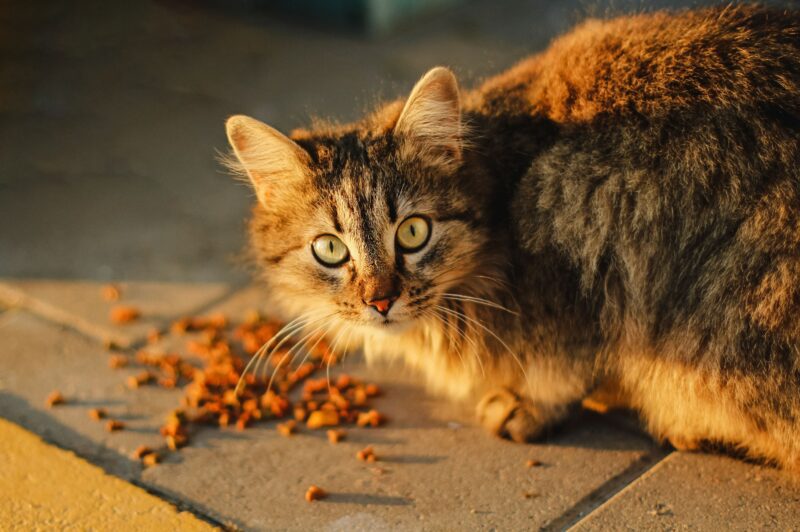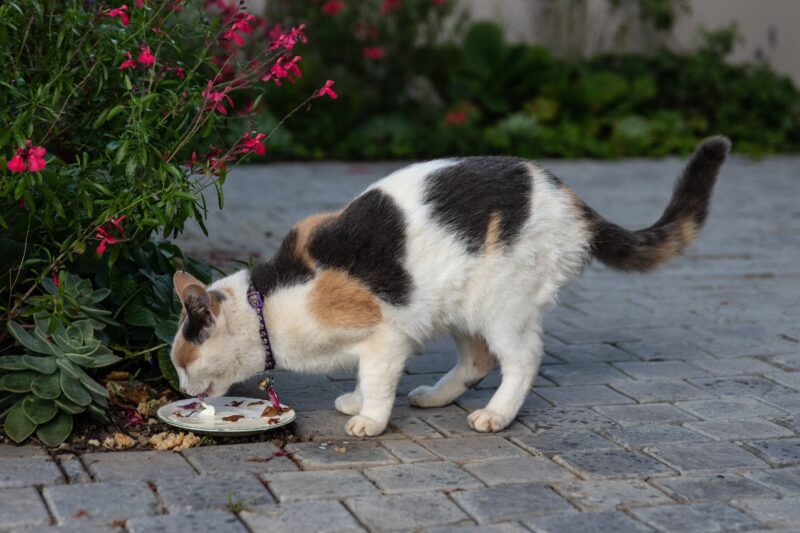Choosing the right diet for your feline companion is a crucial aspect of responsible cat ownership. The debate between feeding raw diets and commercial cat food is a topic that sparks discussions among cat owners. In this comprehensive guide, we’ll delve into the pros and cons of both raw and commercial cat food, providing insights to help you make an informed decision. Additionally, we’ll offer guidance on how to smoothly transition your cat between these different diets.
What Are the Pros and Cons of Raw Diets for Cats
Pros of Raw Diets:
Nutrient Density:
- Raw diets often consist of fresh meats, organs, and bones, providing a nutrient-dense and biologically appropriate option for cats.
- Cats, as obligate carnivores, can benefit from the natural balance of nutrients found in raw meat.
Dental Health:
- Chewing on raw bones can contribute to dental health by reducing plaque and preventing dental issues.
- The natural chewing action also provides mental stimulation for cats.
Potential Allergen Avoidance:
- For cats with food sensitivities, a raw diet allows for more control over the ingredients, potentially reducing exposure to common allergens.
Shinier Coat and Healthy Skin:
- Supporters of raw diets often claim that cats experience improved coat condition and skin health.
- The high-quality proteins and fats in raw meat are believed to contribute to a glossy coat.
Cons of Raw Diets:
Nutritional Imbalance:
- Preparing a balanced raw diet requires careful planning to meet a cat’s nutritional needs.
- Inexperienced cat owners may struggle to provide a complete and well-rounded diet.
Microbial Contamination:
- Raw meat poses a risk of bacterial contamination, which can lead to foodborne illnesses for both cats and their owners.
- Handling and storing raw meat require strict hygiene practices.
Expense and Convenience:
- Feeding a raw diet can be more expensive than commercial cat food.
- The time and effort required for preparation may be challenging for busy cat owners.
Potential for Bones and Teeth Issues:
- While chewing on bones can benefit dental health, it also carries the risk of broken teeth or digestive issues if not properly supervised.
What are the Pros and Cons of Commercial Cat Food

Pros of Commercial Cat Food:
Convenience and Availability:
- Commercial cat food is readily available, convenient, and requires no preparation.
- A wide range of formulations allows cat owners to choose based on their cat’s age, health, and dietary preferences.
Nutritional Consistency:
- Reputable commercial cat foods undergo rigorous testing to ensure nutritional consistency and meet the standards set by relevant authorities.
- Formulas are often designed to meet the specific needs of different life stages.
Long Shelf Life:
- Commercial cat food has a longer shelf life and is less prone to spoilage compared to raw meat.
- This makes it convenient for cat owners who prefer to buy in bulk.
Variety of Options:
- Commercial cat food comes in various textures, including dry kibble, wet canned food, and semi-moist options.
- This variety allows cat owners to find a formulation that suits their cat’s preferences.
Cons of Commercial Cat Food:
Processing and Additives:
- Some commercial cat foods may contain additives, preservatives, and artificial flavors.
- Overly processed options may lack the freshness and natural enzymes found in raw diets.
Less Dental Stimulation:
- Most commercial cat foods, especially kibble, provide less dental stimulation compared to raw diets.
- Dental health may require additional care, such as dental treats or regular teeth cleanings.
Potential for Allergens:
- Cats with food sensitivities or allergies may react to certain ingredients found in commercial cat food.
- Identifying and avoiding specific allergens can be challenging with pre-formulated options.
Preservatives and Additives:
- Some cat owners are concerned about the use of preservatives and additives in commercial cat food.
- Opting for high-quality brands with minimal additives can help address this concern.
Transitioning Between Diets

Gradual Transition:
- Regardless of the direction of the transition, it’s essential to introduce the new diet gradually.
- Start by mixing a small amount of the new food with the current food, gradually increasing the ratio over several days.
Monitoring Health and Behavior:
- Keep a close eye on your cat’s health and behavior during the transition.
- Look for signs of gastrointestinal upset, allergies, or any other adverse reactions.
Consulting with a Veterinarian:
- Before making significant dietary changes, consult with your veterinarian.
- They can provide guidance on the nutritional needs of your specific cat and recommend appropriate diets.
Balancing Homemade Diets:
- If transitioning to a raw diet, seek advice from a veterinarian or a feline nutrition expert to ensure the diet is balanced and nutritionally complete.
- Supplements may be necessary to address any nutrient gaps.
Addressing Preferences:
- Cats can be notoriously picky eaters, and their preferences should be considered during the transition.
- Experiment with different textures and flavors to find what your cat enjoys.
Conclusion:
Choosing between a raw diet and commercial cat food involves weighing the pros and cons, considering your cat’s individual needs, and assessing your lifestyle. Both options can provide a balanced and nutritious diet when chosen and implemented thoughtfully. Remember that the key to a successful transition is gradual introduction, close monitoring of your cat’s health, and consulting with your veterinarian for personalized guidance. Whether you opt for the convenience of commercial cat food or the nutritional benefits of a raw diet, the health and happiness of your feline companion should always be the ultimate priority.

